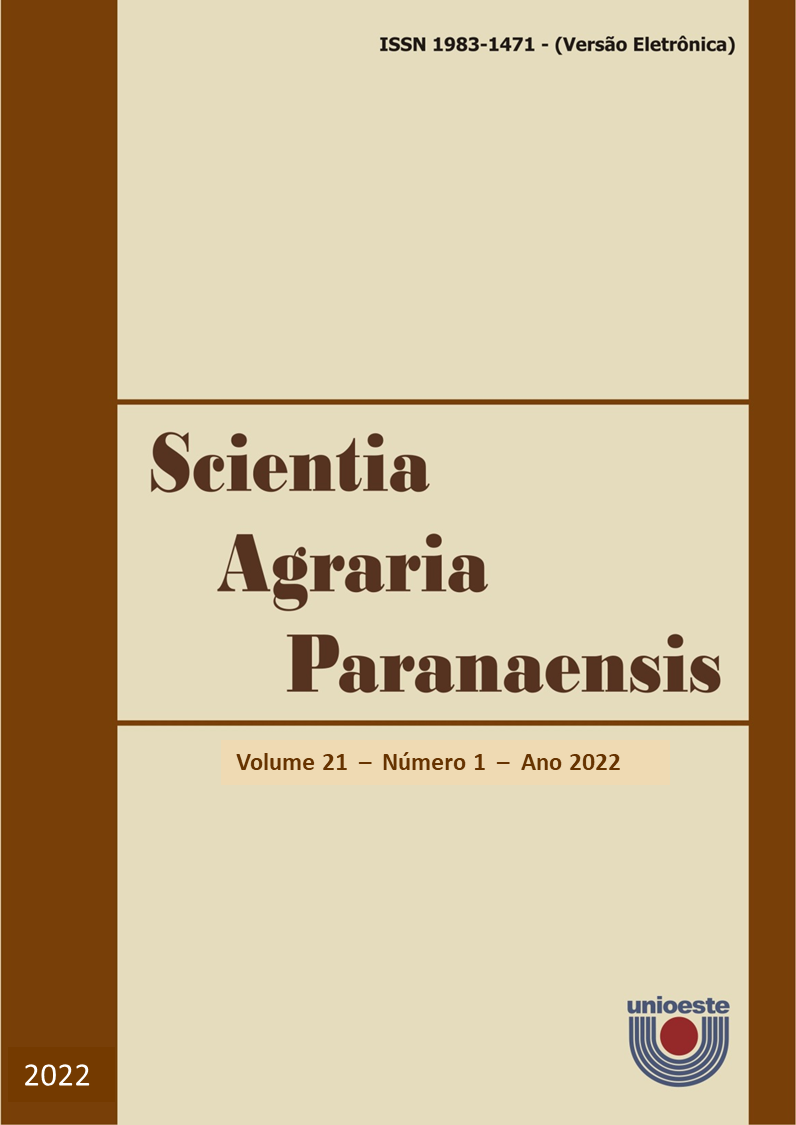EFFECT OF CROPPING SPACES ON RADISH
DOI:
https://doi.org/10.18188/sap.v21i1.29120Abstract
Given the importance of culture and the need for phytotechnical knowledge about the spatial arrangement of plants. The objective of the present work was to evaluate the productive parameters of the radish culture when submitted to different spatial arrangements between plants and rows. For this, the hybrid cultivar Red Pearl was used as a test in a randomized block experimental design, arranged in a 4 x 6 factorial scheme, with four replications. The factors comprise the combination of crop spacing between “rows” and “plants”. The factor levels correspond to the distances between rows of: 8, 16, 24 and 32 cm; and plants of: 4, 6, 8, 10, 12 and 14 cm. Root yield, average root mass, longitudinal and transverse diameters and non-commercial roots were determined. The data were submitted to analysis of variance and, when significant, to linear regression analysis with the aid of Software R. The results showed that there is no interaction between the spacing factors for the analyzed parameters, and the spacing between rows and plants influences the independently evaluated attributes. Both treatment factors, when increased, provide less mass and greater root diameters.
Key words: Density, Raphanus sativus, Yield.
Downloads
Published
How to Cite
Issue
Section
License
Aviso de Direito Autoral Creative Commons
Política para Periódicos de Acesso Livre
Autores que publicam nesta revista concordam com os seguintes termos:
1. Autores mantém os direitos autorais e concedem à revista o direito de primeira publicação, com o trabalho simultaneamente licenciado sob a Licença Creative Commons Attribution que permite o compartilhamento do trabalho com reconhecimento da autoria e publicação inicial nesta revista.2. Autores têm autorização para assumir contratos adicionais separadamente, para distribuição não-exclusiva da versão do trabalho publicada nesta revista (ex.: publicar em repositório institucional ou como capítulo de livro), com reconhecimento de autoria e publicação inicial nesta revista.
3. Autores têm permissão e são estimulados a publicar e distribuir seu trabalho online (ex.: em repositórios institucionais ou na sua página pessoal) a qualquer ponto antes ou durante o processo editorial, já que isso pode gerar alterações produtivas, bem como aumentar o impacto e a citação do trabalho publicado (Veja O Efeito do Acesso Livre).
Licença Creative Commons
Esta obra está licenciada com uma Licença Creative Commons Atribuição-NãoComercial-CompartilhaIgual 4.0 Internacional, o que permite compartilhar, copiar, distribuir, exibir, reproduzir, a totalidade ou partes desde que não tenha objetivo comercial e sejam citados os autores e a fonte.


